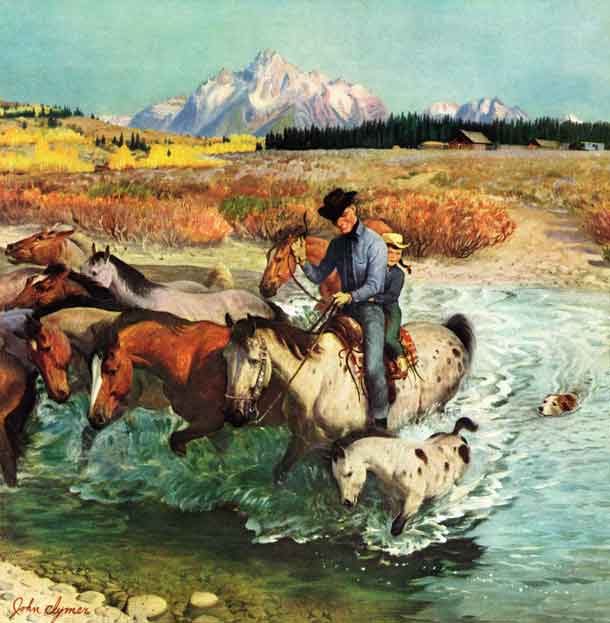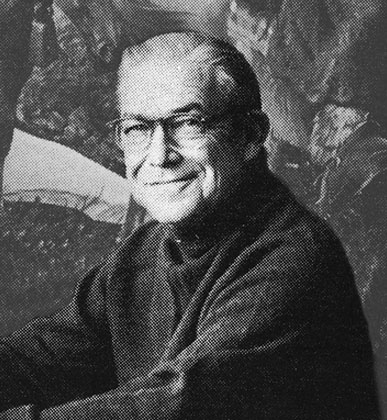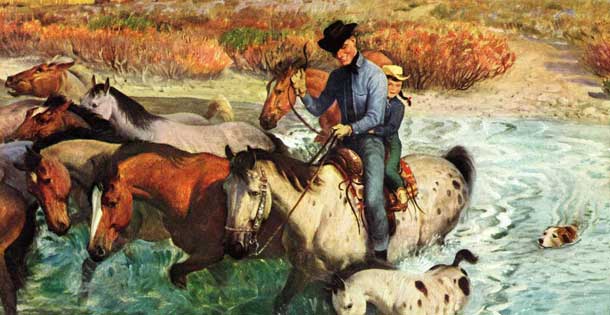
John Clymer
The Saturday Evening Post
There are few Post cover artists who so appreciated the American west as much as illustrator John Clymer. Born in the Pacific Northwest in Ellensburg, Washington, the artist grew up with vast landscapes of mountains and untouched plains reaching to the horizons.
America’s natural terrain charmed Clymer from a young age. He was taken by the mythos of the American west, of cowboys and Indians, and the thrill of adventure.
Clymer’s September 13, 1952 cover, “Herding Horses,” embodies the spirit of the American west. In this depiction, a rancher herds his livestock, fording them across a river on the plains. With his own young daughter saddled behind him, the cowboy smiles down on a colt struggling to navigate the waters.
The composition of the painting gives equal focus to the bounty of the surrounding natural elements, as well as the human involvement in living off the land. The top half of the work shows the snow-capped mountains in the distance complete with rolling hills and forest beneath. Sprinkled throughout are the farmsteads of ranchers and farmers who live off the land.
The artist’s decision to use the American Mustang for the river-crossing livestock instead of cattle or oxen adds to the overall wild and untamable nature of the American west. A feral horse that interbred with the European thoroughbred, it became a wild animal on the American plains. Their spots are a noticeable feature of their uncontrolled breeding in the wild. Note that Clymer’s rancher chooses to ride the most spotted mustang of the group rather than a monochrome horse of his herd. This symbolizes the cowboy’s ability to tame the Wild West.
Clymer used a vibrant color pattern to expose the beauty of nature and the change of seasons. A master of illustration who studied under N.C. Wyeth, Clymer shows off his artistic finesse in the clarity of the stream. His ability to successfully illustrate clear water, the rocks beneath, and the horses’ shadows upon the ripples is a testament to his artistic daring.
In fact, Clymer’s well-rounded training is evident throughout the entirety of the work. He is capable of drawing humans, as is evidence by the man and child on horseback. He flawlessly composes the equine trot, one of the most difficult animal forms in motion.
John Clymer was a master of his genre, and his passion for the land translates well onto canvas. Today, his work is well respected and highly lauded by western art museums and societies across the country. His artwork not only maintained but enhanced the myth of the American west. Many of his original paintings and illustrations are on display at the Clymer Museum of Art in Ellensburg, Washington.
 To learn more about John Clymer and to see other inside illustrations and covers from this artist, click here!
To learn more about John Clymer and to see other inside illustrations and covers from this artist, click here!Become a Saturday Evening Post member and enjoy unlimited access. Subscribe now



